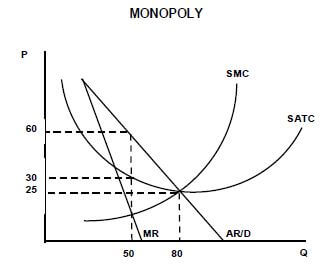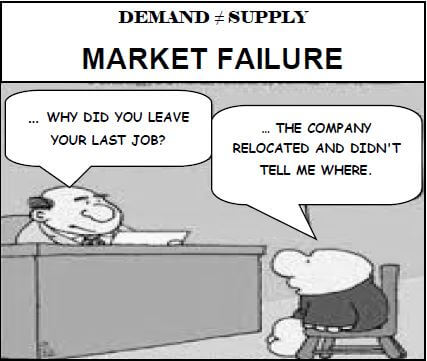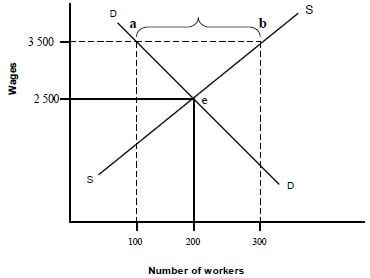ECONOMICS PAPER 2 GRADE 12 QUESTIONS - NSC PAST PAPERS AND MEMOS FEBRUARY/MARCH 2017
Share via Whatsapp Join our WhatsApp Group Join our Telegram GroupECONOMICS
PAPER 2
GRADE 12
NSC PAST PAPERS AND MEMOS
FEBRUARY/MARCH 2017
INSTRUCTIONS AND INFORMATION
- Answer FOUR questions as follows in the ANSWER BOOK:
SECTION A: COMPULSORY
SECTION B: Answer TWO of the three questions.
SECTION C: Answer ONE of the two questions. - Answer only the required number of questions. Answers in excess of the required number will NOT be marked.
- Number the answers correctly according to the numbering system used in this question paper.
- Write the question number above each answer.
- Read the questions carefully.
- Start EACH question on a NEW page.
- Leave 2–3 lines between subsections of questions.
- Answer the questions in full sentences and ensure that the format, content and context of your responses comply with the cognitive requirements of the questions.
- Use only black or blue ink.
- You may use a non-programmable calculator.
- Write neatly and legibly.
QUESTIONS
SECTION A (COMPULSORY)
QUESTION 1 30 MARKS – 20 MINUTES
1.1 Various options are provided as possible answers to the following questions. Write down the question number (1.1.1–1.1.8), choose the answer and make a cross (X) over the letter (A–C) of your choice in the ANSWER BOOK.
EXAMPLE:
1.1.9 ![]()
1.1.1 In the long run, an individual business in perfect competition will be in equilibrium when marginal …
- revenue equals total cost.
- cost equals average variable cost.
- cost equals marginal revenue.
1.1.2 An imperfect market where information is complete:
- Monopoly
- Monopolistic competition
- Oligopoly
1.1.3 The demand curve of a monopolistic competitor is …
- positively sloped.
- negatively sloped.
- horizontal.
1.1.4 An example of a fixed-cost item:
- Electricity
- Rent
- Telephone
1.1.5 Headline inflation is used by the SARB to decide on the level of …
- employment.
- the interest rate.
- production.
1.1.6 Foreigners travelling to South Africa are regarded as … tourists.
- domestic
- outbound
- inbound
1.1.7 Attending a sports event is an example of … tourism.
- cultural
- eco
- business
1.1.8 Core inflation excludes items with … prices.
- high
- stable
- volatile (8 x 2) (16)
1.2 Choose a description from COLUMN B that matches the item in COLUMN A. Write only the letter (A–I) next to the question number (1.2.1–1.2.8) in the ANSWER BOOK, for example 1.2.9 J.
COLUMN A | COLUMN B |
1.2.1 Marginal cost |
(8 x 1) (8) |
1.3 Give ONE term for each of the following descriptions. Write only the term next to the question number (1.3.1–1.3.6) in the ANSWER BOOK.
1.3.1 A market structure where only two businesses dominate the market
1.3.2 Products that are identical and standardised
1.3.3 A monopoly that exists because of high development costs
1.3.4 An inflation rate of more than 50%
1.3.5 The process of managing the environment in such a way that it remains intact
1.3.6 The provision of goods and services such as roads, telephone lines, radio and television services (6 x 1) (6)
TOTAL SECTION A: 30
SECTION B
Answer any TWO of the three questions in this section in the ANSWER BOOK.
QUESTION 2: MICROECONOMICS 40 MARKS – 30 MINUTES
2.1 Answer the following questions.
2.1.1 Name TWO kinds of inefficiencies that can exist in the imperfect market. (2 x 1) (2)
2.1.2 What would happen if firms in an oligopolistic market compete on prices? (1 x 2) (2)
2.2 Study the graph below and answer the questions that follow. 
2.2.1 What is the selling price for the monopolist? (1)
2.2.2 Does the equilibrium position above represent a short run or a long run? (1)
2.2.3 Why will a monopolist always make economic profit in the long run? (2)
2.2.4 What is the requirement for this monopoly to be classified as an artificial monopoly? (2)
2.2.5 Calculate the total profit that this monopolist is making. Show ALL calculations. (4)
2.3 Study the cartoon below and answer the questions that follow.
[Adapted from Internet Cartoons]
2.3.1 Which cause of market failure is illustrated above? (2)
2.3.2 Briefly describe the term market failure. (2)
2.3.3 How can labour as a factor of production become more mobile? (2)
2.3.4 How does the South African government attempt to solve the problem of income inequality? (2 x 2) (4)
2.4 Compare monopolistic competition with perfect competition. (4 x 2) (8)
2.5 Explain why governments sometimes proceed with a project even if the private costs exceed the private benefits in a cost-benefit analysis. (8)
[40]
QUESTION 3: CONTEMPORARY ECONOMIC ISSUES 40 MARKS – 30 MINUTES
3.1 Answer the following questions.
3.1.1 Name TWO causes of cost-push inflation. (2 x 1) (2)
3.1.2 What effect will green tax have on the production output of a business that generates a negative externality? (1 x 2) (2)
3.2 Study the table below and answer the questions that follow.
INTERNATIONAL TOURIST ARRIVALS IN SOUTH AFRICA | ||
MARKETS | 2014 | 2015 |
Africa (land) | 1 713 543 | 1 617 570 |
Africa (air) | 102 006 | 95 332 |
Americas | 107 859 | 92 710 |
Asia and Australasia | 103 903 | 81 498 |
Europe | 405 894 | 402 223 |
Total tourist arrivals | 2 435 341 | 2 292 169 |
[Source: www.southafrica.net]
3.2.1 Identify TWO markets in the table that contributed the most to tourism in South Africa during 2015. (2 x 1) (2)
3.2.2 Suggest possible reasons that have led to a general decline in international tourism in 2015. (2 x 2) (4)
3.2.3 Calculate the percentage decline in total tourist arrivals in South Africa between 2014 and 2015. Show ALL calculations. (4)
3.3 Study the information below and answer the questions that follow.
GLOBAL WARMING AND CLIMATE CHANGE The environmental problems of global warming and climate change are real threats to the survival of plants and animals. Through various conferences United Nations has been attempting to address the issues. [Adapted from www.google.co.za] |
3.3.1 What is the effect of the emission of greenhouse gases on the environment? (2)
3.3.2 What is the message conveyed by the cartoon? (2)
3.3.3 Name the international agreement that was formed to deal with global warming and climate change. (2)
3.3.4 How can the world stop the global warming trend? (2 x 2) (4)
3.4 Differentiate between producer price index and consumer price index. (2 x 4) (8)
3.5 Why is South Africa regarded as a major air polluter in the world? (8)
[40]
QUESTION 4: MICROECONOMICS AND CONTEMPORARY ECONOMIC ISSUES 40 MARKS – 30 MINUTES
4.1 Answer the following questions.
4.1.1 Name TWO methods of non-price competition. (2 x 1) (2)
4.1.2 How can a decline in savings influence the economy negatively? (1 x 2) (2)
4.2 Study the information below and answer the questions that follow.
MINIMUM WAGES In South Africa there are different categories in which minimum wages are applied: civil engineering, contract cleaning services, domestic workers, farm workers, forestry, hospitality, leadership allowance, private security, wholesale and retail, taxis and bargaining council minimum wages. In the United Kingdom, however, there is a national minimum wage that includes all sectors.
|
4.2.1 Identify any TWO sectors in South Africa where minimum wages are applied in the extract above. (2 x 1) (2)
4.2.2 Briefly describe the term minimum wage. (2)
4.2.3 What is the advantage of having a national minimum wage instead of a minimum wage per sector? (2)
4.2.4 Refer to the graph above and explain the implication of the R3 500 minimum wage imposed by the government. (2 x 2) (4)
4.3 Read the extract below and answer the questions that follow.
INFLATION AND ECONOMIC GROWTH Inflation has never been good to the economy. However, whenever there is expected inflation, governments around the world take appropriate steps to minimise inflation to a certain extent. Inflation and economic growth are parallel lines and can never meet. Inflation reduces the value of money and makes it difficult for the common people to survive. Inflation and economic growth are incompatible because the former affects all sectors. [Source: www.fin24.com] |
4.3.1 What, according to the extract, is the effect of inflation on money? (2)
4.3.2 Briefly describe the term stagflation. (2)
4.3.3 Explain the effect of an increase in interest rates on inflation. (1 x 2) (2)
4.3.4 What are the negative effects of inflation on economic growth? (2 x 2) (4)
4.4 Explain the roles played by any TWO key institutions that monitor competition in South Africa. (2 x 4) (8)
4.5 To what extent is inflation targeting beneficial to the economy? (8)
[40]
TOTAL SECTION B: 80
SECTION C
Answer any ONE of the two questions in this section in the ANSWER BOOK. Your answer will be assessed as follows:
STRUCTURE OF ESSAY | MARK ALLOCATION |
Introduction | Max. 2 |
Body | Max. 26 Max. 10 |
Conclusion
| Max. 2 |
TOTAL | 40 |
QUESTION 5: MICROECONOMICS 40 MARKS – 40 MINUTES
In a perfect market the industry influences the behaviour of an individual business to a certain extent.
- With the aid of graphs, explain the following about an individual business under conditions of perfect competition:
- The effect on price if the individual producer increases or decreases his output (supply)
- The derivation of the supply curve from cost curves for the individual producer (26)
- Without using a graph, explain why the price of a product under perfect competition will be equal to the lowest point on the long-run average cost curve. (10) [40]
QUESTION 6: CONTEMPORARY ECONOMIC ISSUES 40 MARKS – 40 MINUTES
Tourism plays an important role and can affect the economy negatively or positively.
- Examine the effects of tourism on the following:
- Poverty
- Employment
- Externalities (26)
- How can South Africa promote domestic tourism? (10) [40]
TOTAL SECTION C: 40
GRAND TOTAL: 150

